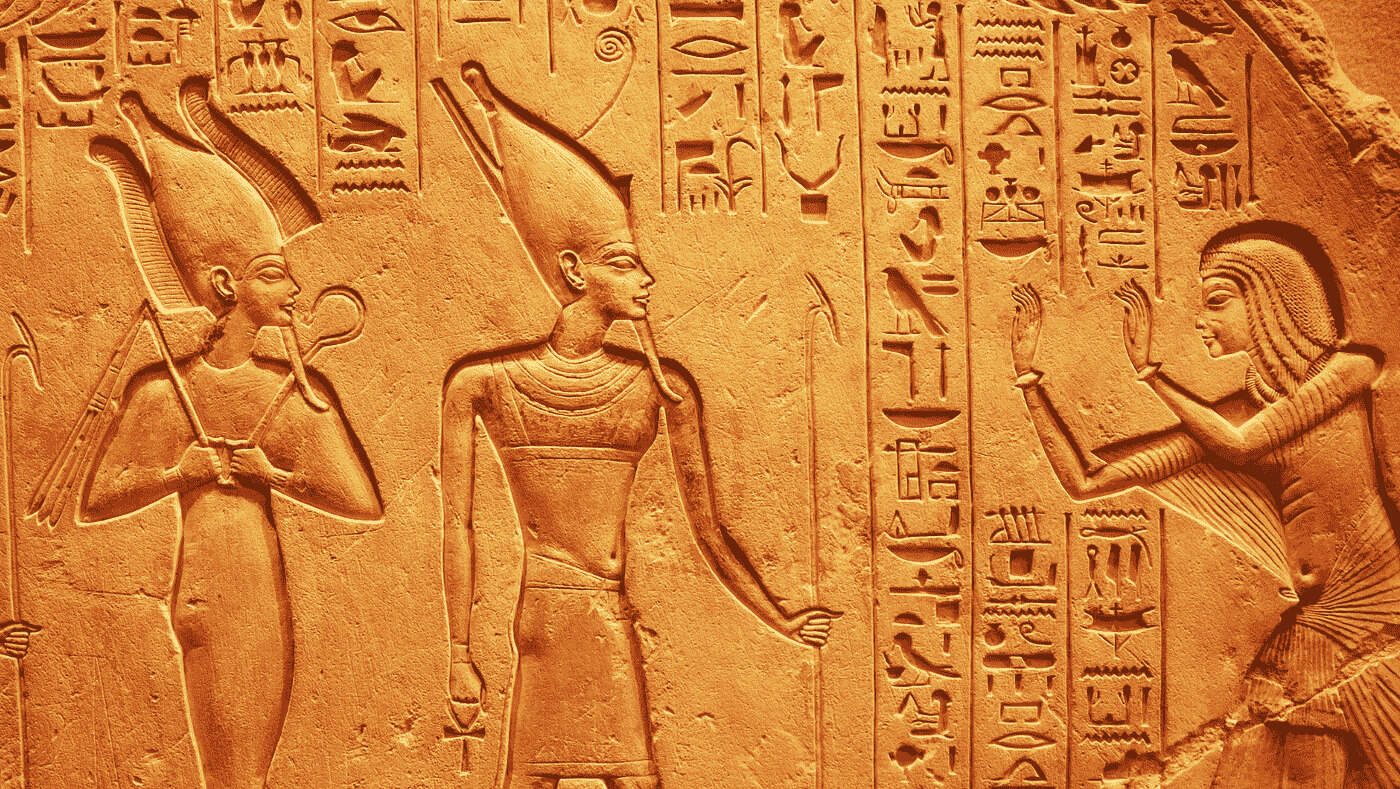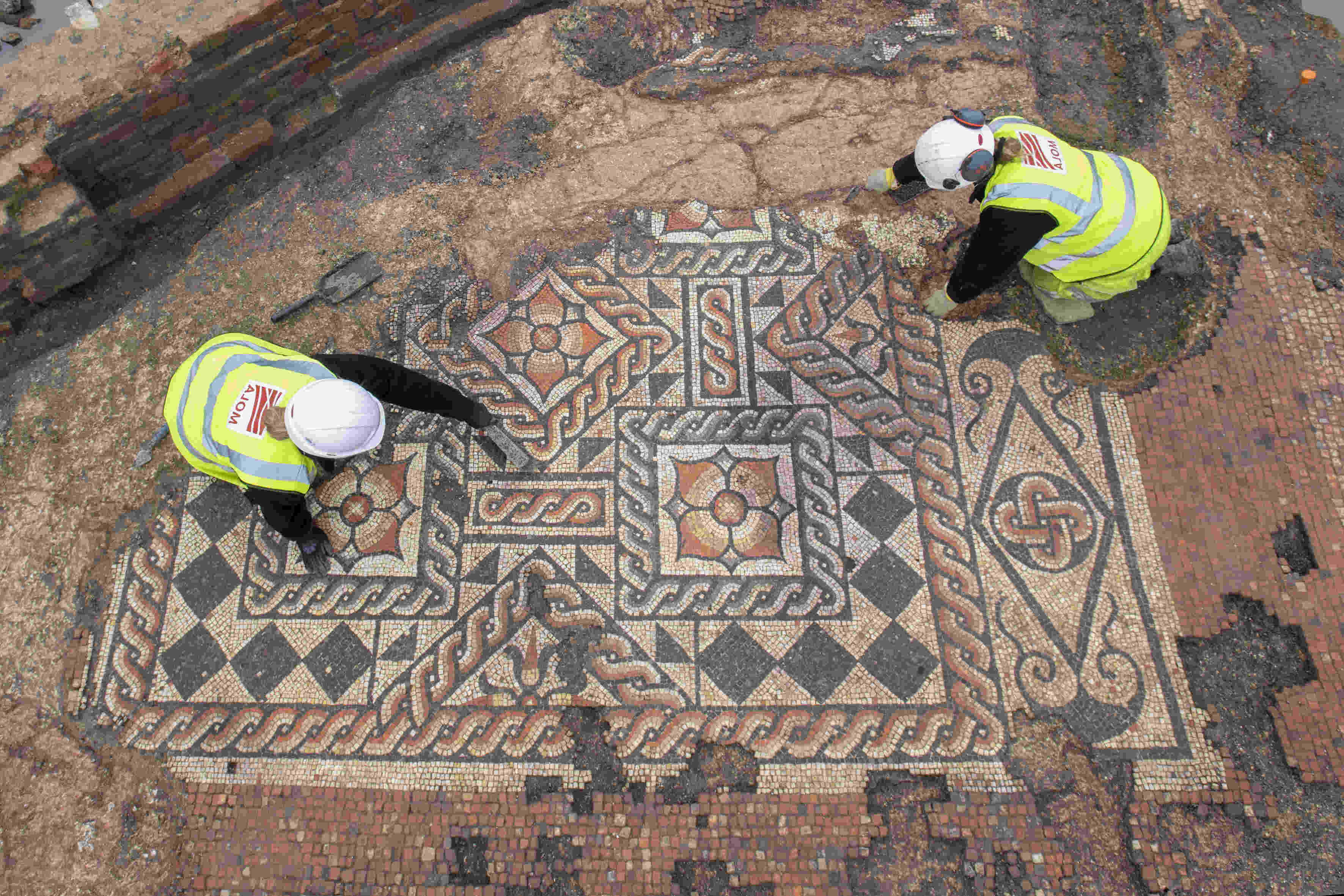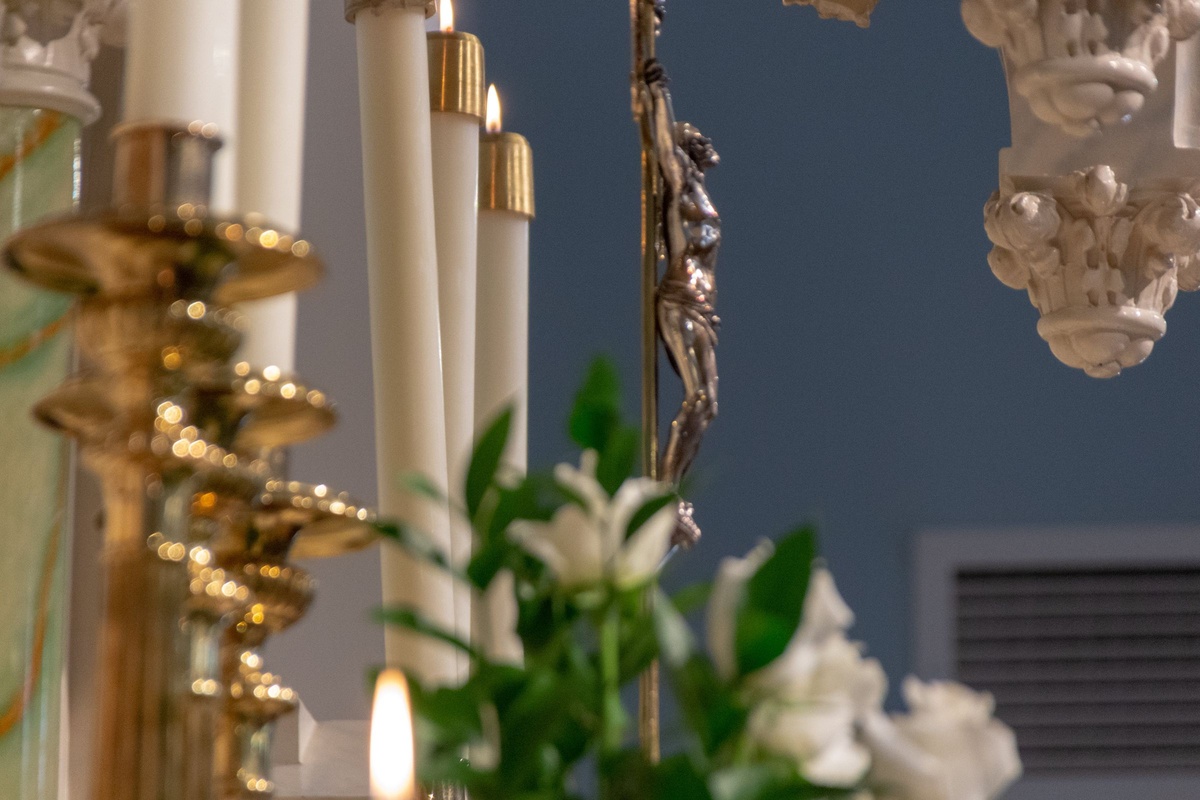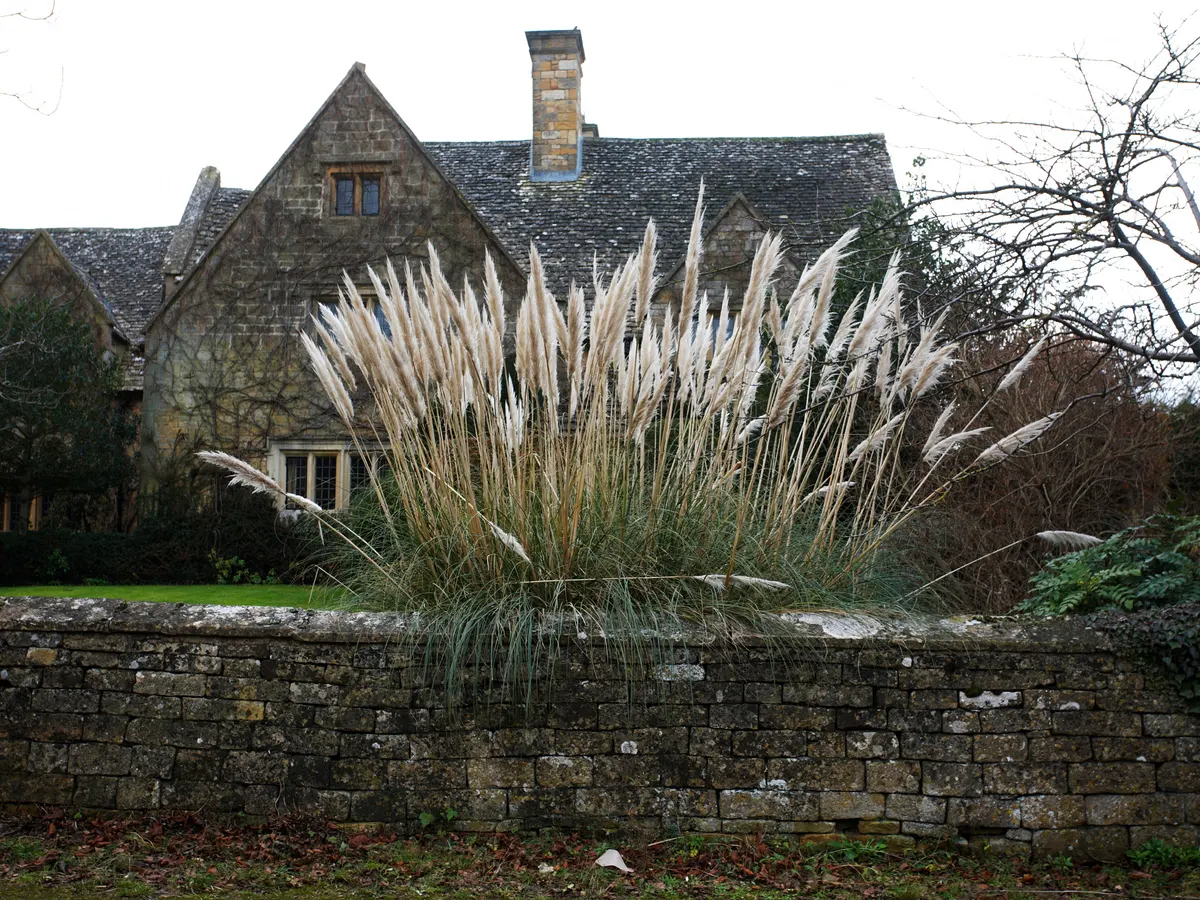Home>Ideas and Tips>Decoding Ancient Symbols In Architectural Details


Ideas and Tips
Decoding Ancient Symbols In Architectural Details
Published: October 19, 2024
Explore the hidden meanings of ancient symbols in architecture, revealing cultural, religious, and cosmic connections in historical structures.
(Many of the links in this article redirect to a specific reviewed product. Your purchase of these products through affiliate links helps to generate commission for Storables.com, at no extra cost. Learn more)
Architecture has long been a canvas for the expression of cultural, religious, and philosophical beliefs. From the towering cathedrals of Europe to the grand palaces of ancient civilizations, the built environment often serves as a repository for the symbolic language of its creators. This article delves into the rich history of architectural symbolism, exploring how ancient structures were designed to convey deeper meanings and connect with the cosmos.
The Cosmic Observation and Architectural Design
In ancient times, the observation of nature was a fundamental aspect of human existence. People sought to understand space and time, which found its material expression in architecture. The need to comprehend the universe was so deep and innate in the human soul that similar beliefs and symbols appeared in distant peoples without direct cultural or trade exchanges.
From cosmic observations derived geometrical concepts and harmonic relationships common to people of different origins. For example, the concept of orthogonality and the identification of pure geometric forms, such as the cube or the sphere, were associated with specific symbolic meanings. Architecture was used as a tool to verify these observations and in parallel for communication and collective celebration of the first great discoveries derived from the observation of nature.
This is particularly evident in architectural spaces designed to measure time through light and orientation. Their design required knowledge of rules derived from astronomy, drawing, geometry, and mathematics. The study of geometry and orientation used in architecture to channel light in the desired way is a useful tool for understanding the theoretical and technical knowledge at the time.
The symbolic aspects of geometry materialized through architecture rites and beliefs related to cosmic observations. Astronomical knowledge in the Mediterranean was applied in architectures intended as a “mirror” of the universe. These structures contained astronomical implications, cosmic miniaturizations, references to Earth, Heaven, and the movements of major celestial bodies.
The observation of the sun and the shadows projected was also the starting point for the birth of studies about projective geometry, optics, and the creation of instruments for measuring time. The use of shadows is one of the first known methods for architectural survey. Historical sources report that Thales of Miletus (640-546 B.C.) astonished Egyptians by calculating the height of the Great Pyramid using shadows and properties of similar triangles when the sun’s rays formed an angle of 45° with the pyramid base.
Read more: How To Read Floor Plan Symbols
Archeoastronomy and Ancient Buildings
Archeoastronomy, the study of ancient astronomical practices and their relationship to architecture, provides valuable insights into how ancient structures were designed. These buildings often aligned with celestial bodies or significant astronomical events, reflecting the deep understanding and reverence for the cosmos.
For instance, many ancient temples and monuments were built with precise orientations towards specific stars or constellations. The alignment of these structures with celestial bodies was not merely coincidental but rather a deliberate attempt to connect with the divine and understand the workings of the universe.
The ancient Egyptians, for example, built their pyramids with meticulous attention to astronomical observations. The Great Pyramid of Giza is aligned almost perfectly with the true north, and its base is a near-perfect square. This alignment reflects the Egyptians' advanced knowledge of astronomy and their desire to replicate the order and harmony of the universe on earth.
Similarly, ancient Greek architects designed buildings that incorporated geometric shapes and proportions believed to be in harmony with the cosmos. The Parthenon in Athens, for example, features a facade that is a perfect example of Doric architecture, with columns that are precisely aligned and proportioned according to classical orders.
Freemasonic Architecture and Symbolism
Freemasonic architecture is another rich source of symbolic language in built environments. Freemasonry, a fraternal organization with roots in medieval stonemasons' guilds, has a long history of constructing impressive architectural wonders that are replete with symbolic meanings.
Freemasonic architecture is heavily influenced by the neoclassical style, which emphasizes the use of classical orders (Doric, Ionic, and Corinthian) and perfect geometric proportions. This preference for neoclassicism is often attributed to the writings of Scottish Freemason James Anderson, who in 1723 published the organization’s “Constitutions” and extolled the virtues of Roman architecture, particularly the work of Inigo Jones and Andrea Palladio.
Each element in Freemasonic architecture represents a deeper philosophical or spiritual meaning. At the heart of this symbolism is the Temple of King Solomon, which is believed to have housed the Ark of the Covenant and has held a special significance for Freemasons for centuries.
Some notable symbols found in Freemasonic buildings include:
- Mosaic Pavement: Thought to represent duality in human existence or the paving stones of King Solomon’s Temple.
- Blazing Star: Symbolizes the sun, the Star of Bethlehem, or Divine Providence.
- Square and Compasses: Represent morality and self-restraint.
- Pillars of Boaz and Jachin: Symbolize wisdom and stability.
- All-Seeing Eye: A reminder of the ever-present gaze of the “Great Architect of the Universe.”
These symbols are not merely decorative; they are integral parts of the architectural language used by Freemasons to convey their beliefs and values. The intricate designs and rituals associated with these symbols continue to captivate historians and the general public alike, offering insights into the cultural heritage and aspirations that have shaped the built environment throughout the ages.
Decoding Early Symbols
The earliest symbols used in architecture often retain their enigmatic nature despite extensive research. One of the most intriguing examples is the Ice Age geometric symbols found in caves across Europe.
These symbols have been interpreted in various ways over the years. Some believe they are the work of shamans or religious leaders who used trance states to create these geometric patterns. However, this theory is not widely supported, as the symbols do not group together as would be expected if they were produced by individuals in trance states.
Ian Tattersall, in his article "Decoding the Earliest Symbols," suggests that these symbols may encode information in a durable form but are unlikely to be a visual representation of spoken language. The symbols certainly have symbolic content, but their exact meaning remains elusive.
Despite the lack of definitive answers, these early symbols continue to fascinate researchers and the public. They represent an early attempt to communicate complex ideas through visual means, reflecting a deep understanding of the world and its mysteries.
Graphic Symbol Detection in Ancient Documents
The study of graphic symbols in ancient documents provides another layer of complexity in understanding architectural symbolism. The NOTAE project aims to study graphic symbols added by authors of historical documents from Late Antiquity to early medieval Europe.
This task is challenging due to the high number of documents and the need for domain-specific knowledge. Researchers propose an AI-based system that highlights potential symbols for validation by experts. The system uses feature auto-encoding to improve detection performance compared to trivial template matching.
The detection of graphic symbols in handwritten documents requires expertise in paleography. These symbols often carry essential insights into social and historical contexts but are difficult to identify without specialized knowledge.
Conclusion
Decoding ancient symbols in architectural details reveals a rich tapestry of cultural, religious, and philosophical beliefs. From the precise alignments of ancient temples to the intricate symbolism of Freemasonic architecture, each structure tells a story about its creators' understanding of the universe.
While some symbols remain enigmatic, their presence underscores the deep connection between architecture and the cosmos. The study of these symbols not only provides historical context but also offers a glimpse into the aspirations and values that have shaped human civilization.
In conclusion, the exploration of ancient symbols in architectural details is a journey through time and space, revealing the intricate web of meanings that underpin some of humanity's most enduring creations. As we continue to uncover these secrets, we are reminded of our place within the universe and the enduring legacy of our ancestors' wisdom.
Was this page helpful?
At Storables.com, we guarantee accurate and reliable information. Our content, validated by Expert Board Contributors, is crafted following stringent Editorial Policies. We're committed to providing you with well-researched, expert-backed insights for all your informational needs.















0 thoughts on “Decoding Ancient Symbols In Architectural Details”